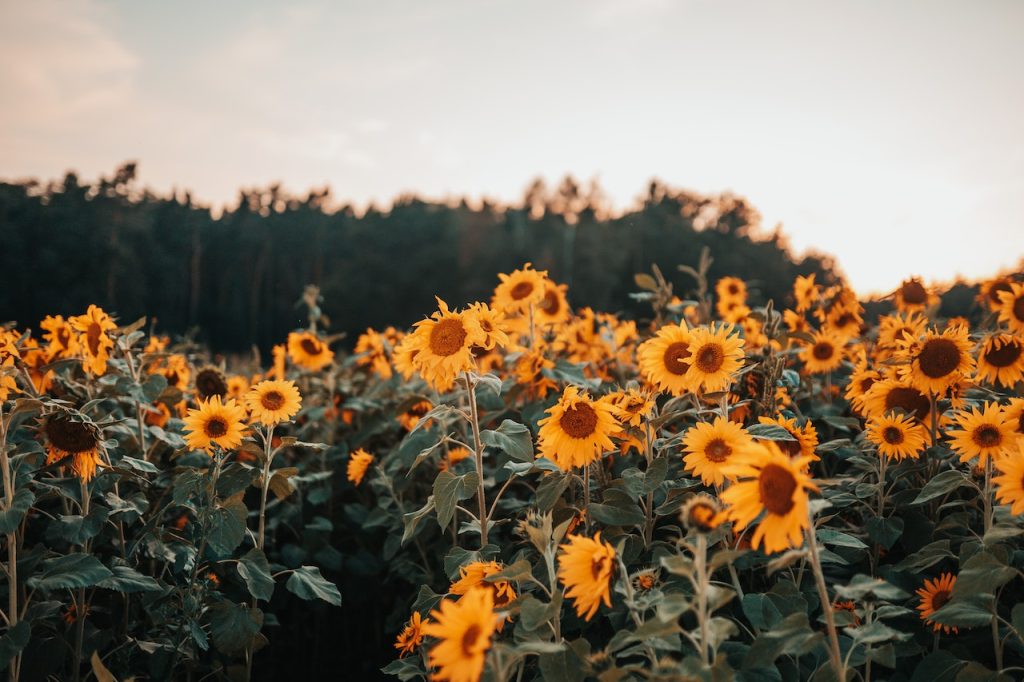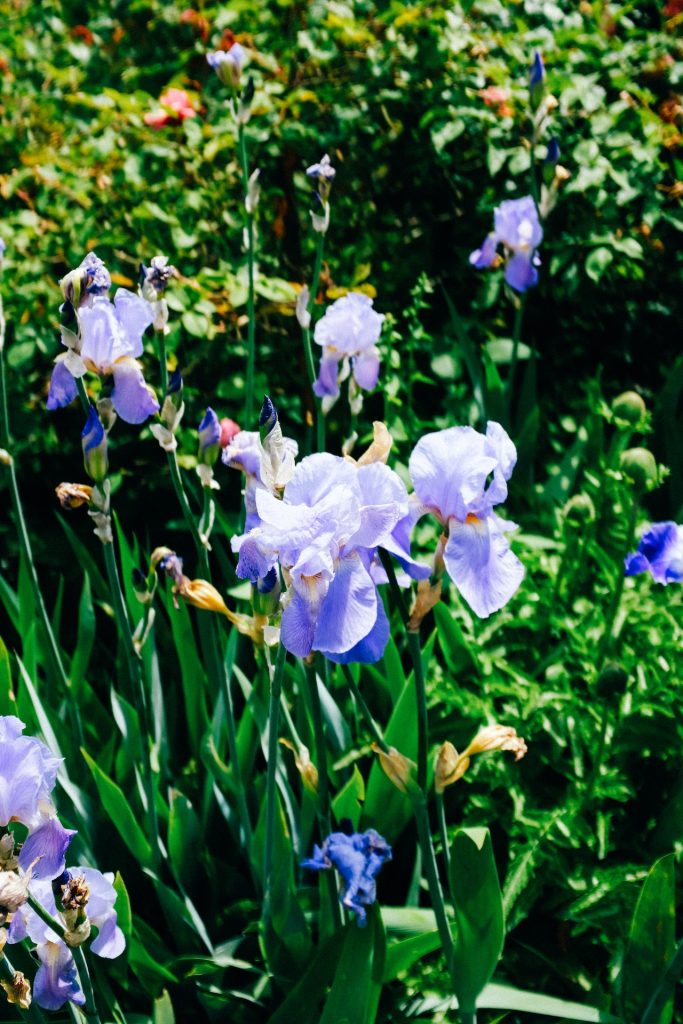As a gardening enthusiast, you know well the importance of a properly designed and maintained flower border. It adds color and interest to your garden, improves the overall aesthetic appeal, and attracts beneficial insects and pollinators.
However, with so many flower species and varieties available, it can be challenging to come up with creative and inspiring flower border concepts. In this article, we’ll provide you with 13 flower border ideas that are sure to impress. Whether you’re an experienced horticulture veteran or someone who is just starting their gardening adventure, you should have no issues finding something to suit your style and taste.
From classic combinations to more modern designs, read on to discover how you can create a stunning flower border in your own backyard!
Key Takeaways
- Flower borders can add color, texture, and interest to your garden.
- There are many different combinations of flowers that can be used to create a border, depending on the location and conditions in your garden.
- Some common flowers that are used in borders include sunflowers, zinnias, black-eyed susans, purple coneflowers, marigolds, and petunias.
- Hostas, ferns, astilbes, and bleeding hearts are some of the best choices for shady areas.
- Irises, cattails, marsh marigolds, and Joe Pye weed are perfect for wet areas.
- Creeping phlox, stonecrop, dianthus, and hens and chicks can really make your rock garden shine with color and texture.
Flower Border Ideas for Sunny Areas
If your garden gets plenty of sunshine, then you have a wide range of options for creating a flower border that’s bursting with color and life. Here are three ideas to get you started:
1. Sunflowers and Zinnias
Sunflowers and zinnias are both bright and cheerful flowers that thrive in sunny areas. They’re also easy to grow and can be planted from seeds, making them an affordable option for gardeners on a budget. The tall and majestic sunflowers can be used as a backdrop for the shorter zinnias, creating a dynamic and eye-catching display.
If you want to add even more color to your border, consider planting marigolds alongside the sunflowers and zinnias. The combination of yellow, orange, and red will introduce a vibrant and cheerful vibe to your garden.

2. Black-Eyed Susans and Purple Coneflowers
Black-eyed susans and purple coneflowers are two popular wildflowers that are perfect for sunny areas. They are known for their drought tolerance, so they are an excellent choice for those who live in hot and dry climates. The yellow and purple flowers are also a beautiful contrast that will add interest to your garden.
To make your border even more striking, consider adding some ornamental grasses or sedges that will accentuate the height difference between the black-eyed susans and purple coneflowers.
3. Marigolds and Petunias
Marigolds and petunias are two of the most commonly planted flowers in home gardens. They’re both easy to grow and offer a wide range of colors, making them a versatile option for the flower border design.
Petunias come in a variety of colors, including white, pink, purple, and red. They can also be found in different patterns and shapes, so you can really get creative with your border design. Marigolds, on the other hand, are mostly available in shades of yellow and orange.
This flower border combo is perfect for those who want a vibrant and exciting garden. The combination of colors will create a warm and inviting atmosphere that’s perfect for entertaining guests or relaxing on a summer afternoon.
Flower Border Ideas for Shady Areas
Shady areas in your garden can be a bit of a challenge, but with the right plants, they can also be transformed into beautiful and serene spaces. Again, we can show you three amazing ideas for flower borders, this time suitable for shady areas:
4. Hostas and Ferns
Hostas and ferns are a classic combination for shady areas. Hostas are known for their beautiful foliage in shades of green, blue, and variegated patterns. Ferns, on the other hand, provide a delicate texture and movement with their fronds. Together, they create a lush and calming border.
When planting hostas and ferns, make sure to choose a variety of shapes, sizes, and textures for a more interesting border. Hostas prefer well-draining soil, while ferns like it more consistently moist. Avoid direct sunlight, as both plants can scorch with too much exposure.
5. Astilbes and Bleeding Hearts
The combination of astilbes and bleeding hearts is a great choice for shady borders. Astilbes have beautiful plumes of pink, white, or red flowers that add height and texture to the border. Bleeding hearts, on the other hand, can add a touch of elegance and delicacy with their heart-shaped flowers in pink or white.
When planting astilbes and bleeding hearts, make sure to choose varieties that bloom at different times of the season for continuous color. Both plants prefer moist soil but can tolerate drier conditions. Avoid planting them in areas with standing water or poor drainage.
6. Impatiens and Begonias
For a splash of color in your shady border, consider planting impatiens and begonias. Both are known for their vibrant and long-lasting flowers in hues of pink, red, white, and yellow. Impatiens are also available in variegated patterns.
When planting impatiens and begonias, make sure to keep the soil moist but not waterlogged. They prefer well-draining soil and will benefit from occasional fertilization. Be mindful of overwatering, as both plants can develop root rot if their soil remains saturated.
Flower Border Ideas for Wet Areas
Wet areas can be a challenge for many gardeners, but with the right plant selection, they can become a stunning and unique feature of your garden. These plants are adapted to the constantly moist soil conditions and can thrive in those environments.
7. Irises and Cattails
Irises and cattails are among the most popular choices for wet areas. Irises come in a wide range of colors and sizes, and their sword-like foliage provides an attractive backdrop for other plants. Cattails are tall, stately plants that can grow up to 10 feet tall and add a natural feel to any wet area.

8. Marsh Marigolds and Joe Pye Weed
Marsh marigolds are one of the earliest blooming spring plants in wet areas. They have bright yellow flowers that add a splash of color to the area. Joe Pye weed is a tall, native wildflower that has a unique pinkish-purple color and a sweet fragrance.
9. Blue Flag and Cardinal Flower
Blue flag is a perennial wetland plant that has striking purple-blue flowers. It is a low-maintenance plant that requires minimal care once established. It works well with the cardinal flower – another native wildflower that has bright red blooms and attracts hummingbirds and butterflies to your garden.
Wet areas can also provide a place to live for many wildlife species, including amphibians and birds. Incorporating these plants in your garden can create a biodiverse habitat and contribute to the overall health of your local ecosystem. By carefully selecting the right plants for your wet area, you can create a beautiful and sustainable garden that will thrive for years to come.
Flower Border Ideas for Rock Gardens
Rock gardens are a unique and challenging environment to grow plants in, but with the right flower border ideas, you can create a stunning and low-maintenance garden space. The following combinations might be perfect for your rock garden:
10. Creeping Phlox and Stonecrop
Creeping phlox and stonecrop are both low-growing, ground-cover plants that work well in rock gardens. Creeping phlox produces dense mats of colorful flowers in the spring, while stonecrop features succulent leaves and clusters of tiny blooms in late summer. Together, they create a dynamic and ever-changing display of color and texture.
When planting creeping phlox and stonecrop, make sure to choose well-draining soil and a location that receives plenty of sunlight. These plants thrive in rocky or sandy ground, making them ideal for rock gardens. Water them sparingly, as they are both drought-tolerant once established.
11. Dianthus and Hens and Chicks
Dianthus, also known as pinks, are hardy, low-growing plants that produce fragrant, fringed flowers in shades of pink, red, and white.
They pair well with hens and chicks, a succulent plant that produces rosettes of fleshy leaves in shades of green, blue, purple, pink, or even grey. Both plants are drought-tolerant and low-maintenance, making them ideal for rock gardens with suboptimal conditions.
To ensure good growth of dianthus and hens and chicks, choose a location that receives full sun. These plants prefer drier conditions and will not tolerate standing water or soggy soil. They are also tolerant of poor soil, making them ideal for rocky or sandy ground.
12. Alpine Poppies and Dwarf Iris
Alpine poppies are a beautiful addition to any rock garden, producing delicate, papery flowers in shades of white, yellow, and orange. They pair well with dwarf iris, a low-growing plant that produces colorful blooms in shades of blue, purple, and white. Together, these plants create a vibrant and eye-catching display in the rock garden.
Make sure to choose a location that receives full sun for the best growth of alpine poppies and dwarf iris. If the soil in your rock garden is not well-draining, consider planting these flowers in raised beds or on slopes to improve drainage. These plants are tolerant of poor soil conditions and do not require fertilization.
13. Blue Fescue Grass and Sedum
Blue Fescue Grass and Sedum are a match made in heaven when it comes to rock gardens. Blue Fescue Grass, also known as Festuca Glauca, is a popular ornamental grass that grows in compact clumps and produces fine needle-like blue-gray leaves. This grass is extremely versatile and can be used in a variety of ways, but it truly shines in rock gardens. Its striking color and texture make it a standout plant in any setting.
Sedum, on the other hand, is a succulent that comes in a wide range of colors and forms. Its fleshy leaves and star-shaped flowers can easily add a burst of color to your border garden.
When combined, Blue Fescue Grass and Sedum create a low-maintenance and visually stunning addition to any rock garden. Plant them in well-draining soil in a sunny spot, and watch as they thrive and add life to your garden.
Conclusion
So there you have it – 13 flower border ideas to take your garden to the next level. With so many different options available, there’s sure to be a combination that’s perfect for your garden.
The various types of flowers and plants we presented in this article can provide you with the color, texture, and interest you need to create a stunning border in practically any environment you can imagine.
Of course, don’t feel like you need to limit yourself to the combinations we’ve listed here. Get creative and mix and match different flowers and plants to come up with a border that’s uniquely yours.
And if you’re still not sure where to start, consider consulting with a local nursery or gardening expert for guidance. They can help you choose the right plants for your garden and provide you with tips on how to care for them. Good luck!
Was it helpful?

Enamored with the world of golf Jack pursued a degree in Golf Course Management at THE Ohio State University. This career path allowed him to work on some of the highest profile golf courses in the country! Due to the pandemic, Jack began Inside The Yard as a side hustle that quickly became his main hustle. Since starting the company, Jack has relocated to a homestead in Central Arkansas where he and his wife raise cattle and two little girls.

